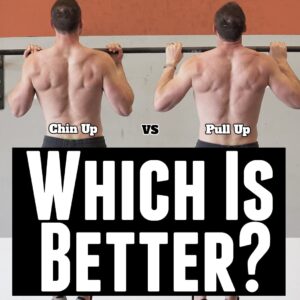Pull Up vs Chin Up
Which is easier?
Which is better?
Which should you do?
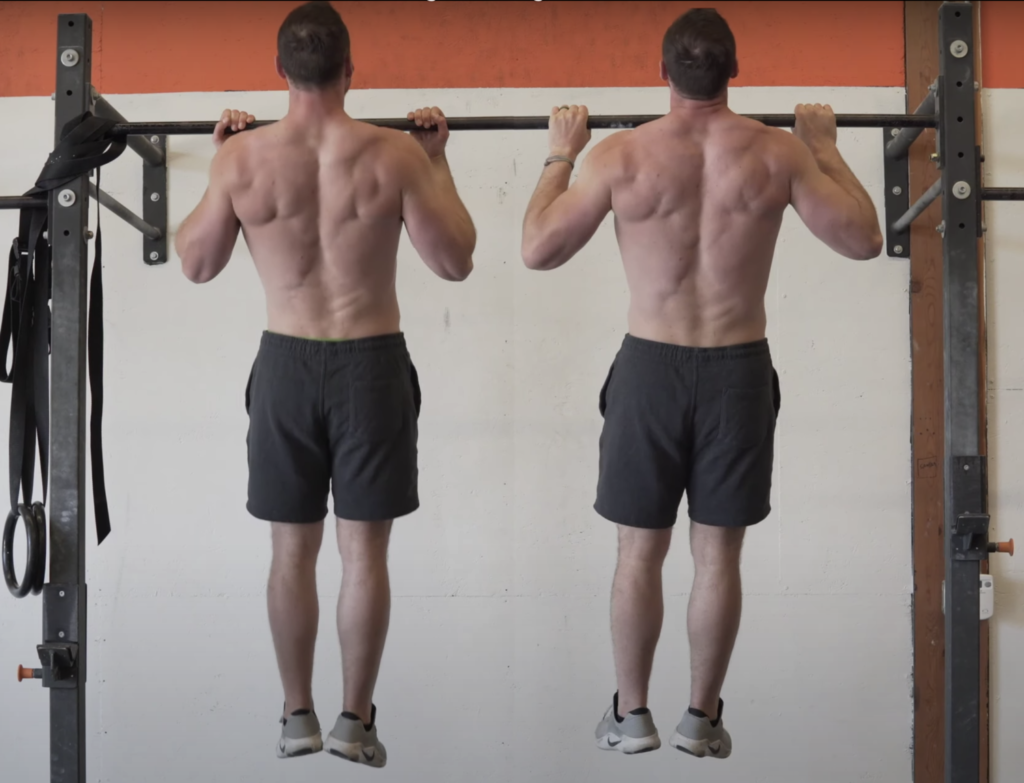
We often get asked by people which of them someone should do. Is there one that’s better?
These are important questions and the goal of today’s blog is to break down some of the major differences between these two movements and help guide you in which you should do!
We’re going to talk about what the chin up and pull up are, the similarities, and the differences
First, let’s tackle what they are.
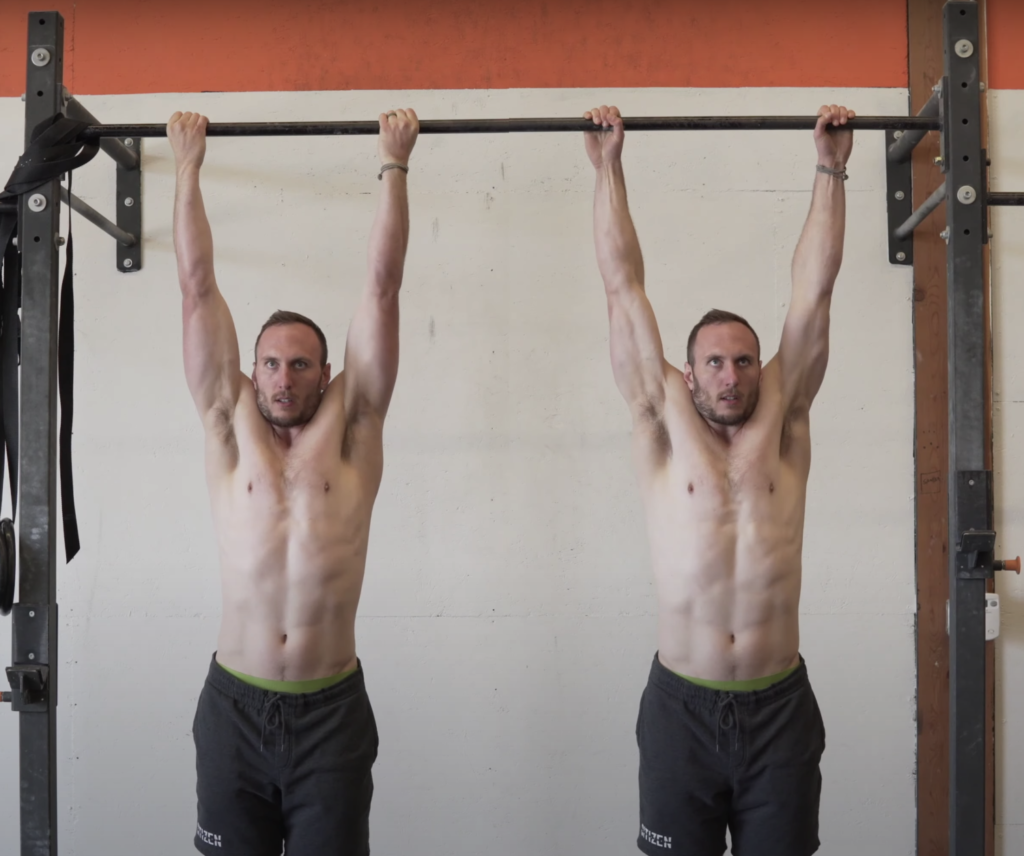
- When we look at the movements, they’re both initiated from a hanging position.
- They go through a full range of motion where we have the head clear the bar and the chest come up to it, possibly making contact.
- And both are completed by returning back down to an outstretched arm.
Due to the general technique, they both use very similar ranges of motion. Each utilizes a significant amount of shoulder flexion and abduction to start the motion and each will then go through a high amount of shoulder extension and adduction to finish the movements.
The shoulder blades can go through a lot of motion in these as well, such as upward rotation and downward rotation, elevation and depression, and retraction and protraction depending on the way you perform the movement.
During execution each will use a high amount of elbow extension and flexion and have a varying amount of spinal movement depending on the technique used.
Now while the ranges are similar, there are a few differences.
For the pull up, we usually see more shoulder flexion, abduction and internal rotation; whereas with the chin up we see more shoulder extension, adduction, and external rotation.
The chin up often has a bit more elbow motion than the pull up and the spinal and scapular motions vary significantly by the technique someone utilizes.
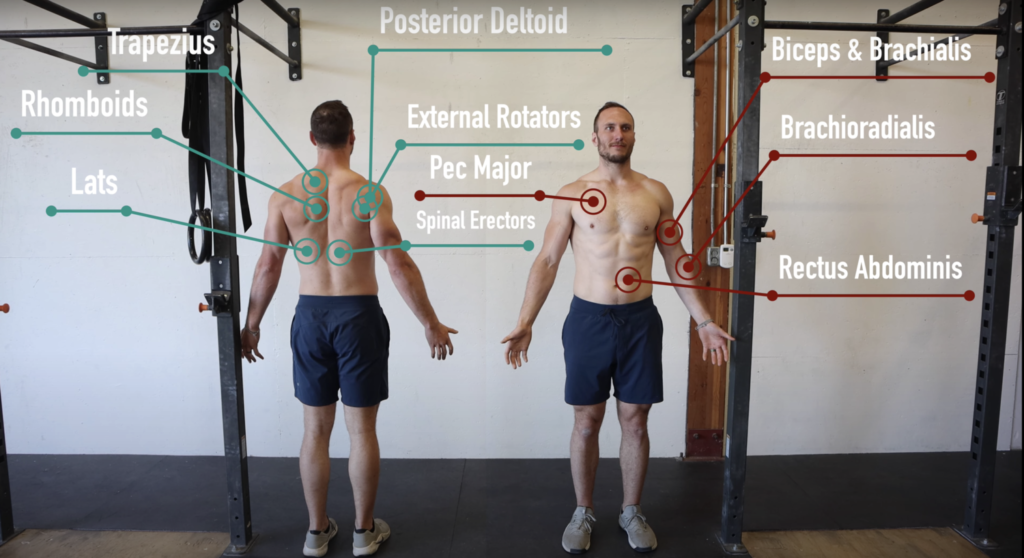
Given the motions, both movements end up utilizing similar muscle groups, such as the latissimus dorsi, trapezius, Rhomboids, and other scapular muscles, posterior deltoid, teres minor, and other external rotators, biceps, brachialis, and other elbow flexors, the Pectoralis Major and they both can work either the spinal erectors or the anterior trunk muscles.
Both of these movements can be really effective for developing all of these muscles, and we will touch on some of the ways you can adjust them for those purposes, but let’s review the differences first.
When we start to look at more of the differences between a pull up and a chin up, there are a few obvious ones, and a few subtle ones.
Most people notice immediately the change in hand position.

With the pull up, we will have both hands facing away from us – called pronated, or overhand.
With the chin up, we will have both hands facing us – called supinated, or underhand.
Why does this matter?
Well the first thing we can do is consider different kinds of bicep curls and how the same weight feels with each, and the muscles that get worked with them.
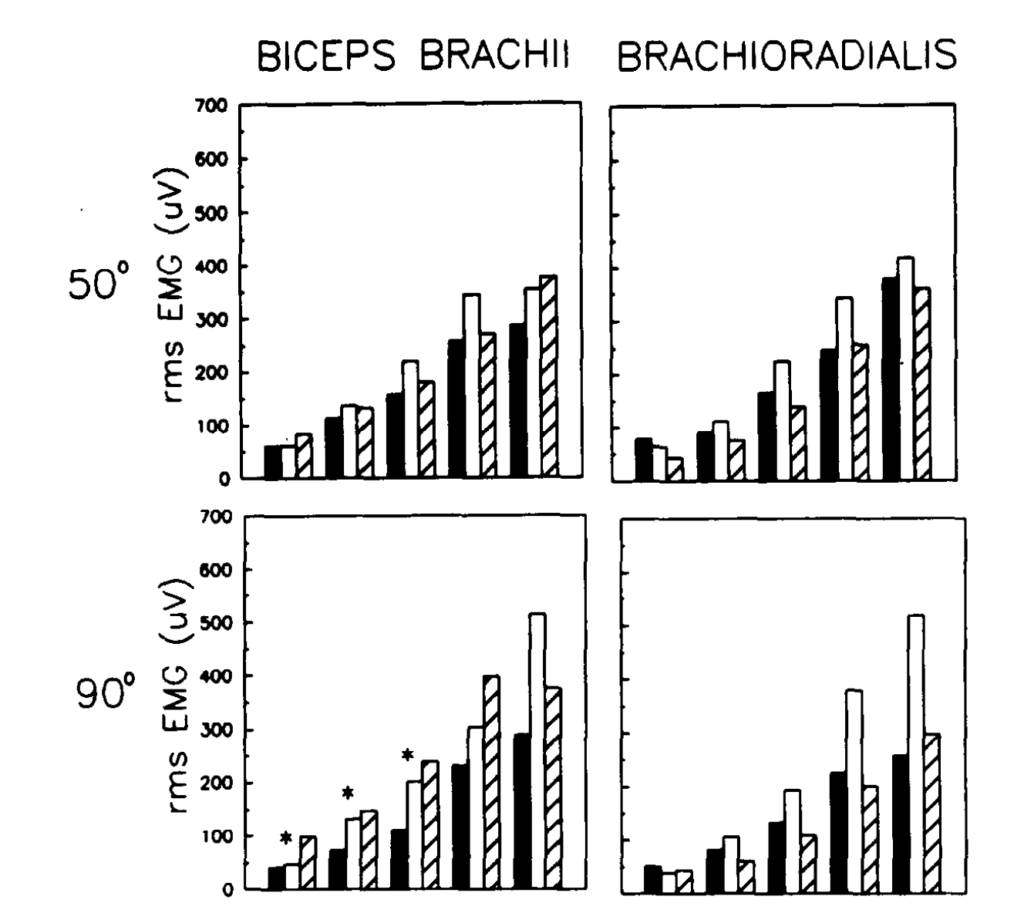
When we do a supinated curl – we’re pretty strong and get a high activation of our biceps brachii
When we do a hammer curl – we’re usually a bit stronger as we have a bit better position for using all of our elbow flexors collectively.
When we do a reverse curl – we’re usually weaker and have less biceps brachii activation. In the reverse curl we do see peak brachioradialis activation, which is another elbow flexor, but with the drop off in the biceps brachii, it’s not as strong of a movement.
If we take this simple comparison and apply it to the two movements, we can already start to see why the chin up is usually thought to be more of a bicep exercise than the pull up.
Now because when we do a chin up or pull up we have our hands rotated differently, we also have our shoulders rotated differently.
During a chin up, with our hands in that supinated position, we put our shoulder into a more externally rotated position.
During a pull up, with our hands in that pronated position, we put our shoulders into a more internally rotated position.
As well, given the change in shoulder rotation, it’s really common for people to have a slightly more narrow grip with the chin up than the pull up.
These are more subtle changes, but they do change the inherent demands for our muscles, which will impact the muscle activation between the movements.
Because of that, if a certain muscle is being used less, we still have to move the same weight, which means other muscles have to do more work.
Studies from Youdas 2010 and Dickie 2017 looked at the muscle activation patterns in the pull up and chin up for a range of different muscles.
Both studies showed that these two movements did in fact use the same muscles, but to varying degrees as we expected.
But they also found some interesting results.
Just like we thought, the biceps had less activation in the pull up than the chin up.
And the brachioradialis was higher in the pull up than the chin up.
Both movements had a high activation of the lats, with the pull up etching out the chin up slightly.
For the mid and lower traps the pull up crushes the chin up, which makes sense given that we normally have more of an emphasis on shoulder retraction in the pull up than chin up.
The erector spinae and the external obliques had higher activation in the chin up than the pull up.
And finally, the pec major was significantly more active in the chin up than the pull up.
These results coincide similarly with other research from Lusk 2010 comparing the hands either pronated or supinated with grip being equivalent during the lat pulldown.
When the hands were pronated, there was greater activation in the lats and mid traps
Whereas when the hands were supinated, there was greater activation in the biceps.
We often think of an exercise working certain muscles, but it usually comes down to how we actually perform the movement that matters.
For instance, by changing our hand width in either of the movements, it can impact the magnitude of muscle usage.
In the Lusk paper, when changing from a wide overhand grip pulldown to a narrow overhand grip pulldown, they saw that there was a reduction in the relative activation of the lats and mid traps, but an increase in the biceps brachii.
This makes sense if we consider how changing the grip width will impact the biomechanics of the movement – such as reduced shoulder adduction and retraction, with more emphasis on elbow flexion and shoulder extension.
This would apply to a pull up or chin up as well.
Should we change different characteristics about them, we can influence what muscles they’re challenging.
So while most people consider the chin up to be a bicep movement and the pull up a lat movement, as the prior studies show us, this isn’t quite the case.
Instead of being a dichotomy, it’s a continuum and where the movement stands on that continuum depends on your execution of it.
So to sum things up:
In general, the chin up tends to be easier for people, whereas the pull up is usually a bit more challenging.
If you want to build up your lats, mid and upper back, or biceps, both options can work well.
However, if you want to emphasize your lats, mid and upper back, you’re better off with the pull up.
Whereas, if you want to challenge your biceps to a higher degree, then the chin up is the better option.
At the end of the day, you’d probably be best off rotating the movements periodically and choosing between them by what the rest of your program looks like.
For instance, if you’re doing a lot of wider grip rowing that will be emphasizing more of your upper and mid back in the program, going with a chin up would likely be a more reasonable choice to accomodate an even distribution of challenge.
Whereas if you’re doing narrow grip rowing or a lot of bicep work in your program, then the pull up would be the better choice.
At the end of the day, the biggest thing is pick one, do it consistently and for long time and you’ll see results.
If you’d like this broken down in a video format, check out the video we made covering this topic:
Studies
https://pubmed.ncbi.nlm.nih.gov/20870527/


